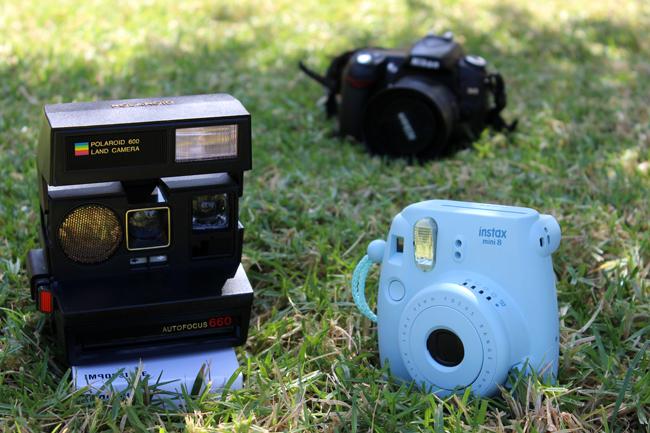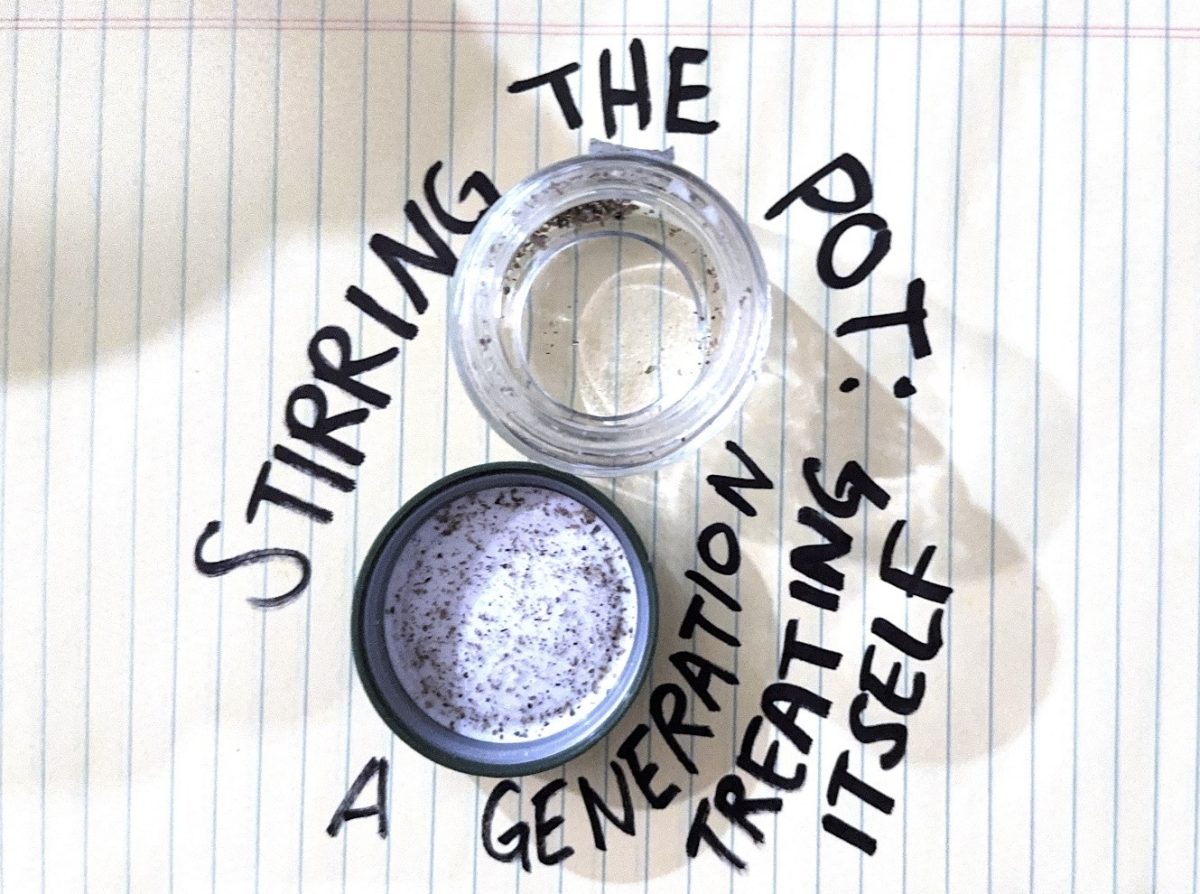Polaroid cameras are becoming popular once again. Quick photos are produced by polariods and the cameras today like the Instax mini 8, are more portable and inexpensive than most DSLR cameras. Photo Credit: Araceli Castillo/ Photo Editor
The key trend of the season seems to be nostalgia in products. With the influx of music festivals, throwback Thursdays, bell-bottoms and record players, young people have been obsessed with everything vintage. Along with vintage throwbacks, we are living in a picture-obsessed era. Social media is all about updating your friends on where you are, what you are doing and what you like.
After all, pictures are worth a thousand words, right? Polaroid cameras are being hauled out of storage and utilized to capture that unique style that can’t be edited or duplicated.ThePolaroid trend has been awakened due to a new demand. What seemed like an outdated product like the Walkman or cassette, Polaroid cameras have become a product that are being reinvented and updated to fit the current trends. According to USA today, which published a story on how Polaroid has updated their products, Polaroid sells equipment that transfers polaroid photos into digital format.
Professor of film photography, Frederick Kuretski said, “I used to use a lot of Polaroids when I was using my large format Sinar. Setting up lighting, composition, and exposure was faster and easier if you pulled a Polaroid first.”
Kuretski noticed students are using Polaroids for class assignments, and photography professors are still utilizing that equipment. Kuretski believes film is still an essential part of photography that students need to learn, not just digital techniques. Polaroids can be a very useful tool for students who shoot film photography.
Students around campus have been utilizing Polaroids for assignments to get used to film photography and that ancient practice of actually developing photographs with chemicals. Michelle Jacobson graduated with a Bachelors in Art from CSUN and is currently working on her Masters degree at CSUN and recalls using Polaroid film in an assignment for her art class.
“We were given the freedom of choosing whatever medium we liked, and I wanted to work with Polaroids,” Jacobson said. She enjoyed the process of Polaroid and selectivity of each frame. She continued to use Polaroid after her class assignment was over.
CSUN student, Andrew Oliver, who is working on his Masters in Biology does not use Polaroid but said, “I think it is an awesome and unique photography platform that has more or less withstood the test of time. Smart phones are a little more relevant these days, but photography is an art, and as such there is no one way to do it.” Oliver mentioned that he is aware of musicians that use polaroid as another means of artistic expression including Tom Scholz, lead guitarist and founding member of Boston. Oliver said, “Scholz worked and had several patents for Polaroid in the years right after he graduated from MIT and before his band exploded in popularity.”
In the most recent issue of Wired magazine, Jack White has a spread of Polaroids that he took. White shared that he was tired of getting rolls of film back from processing with fan notes attached, so he turned to Polaroids to secure his privacy and has appreciated it as an art form.
We have seen many changes in photography, after the rise in iPhone camera and digital use. There are apps such as “Shake it Photo,” “Instant,” and the new app by Polaroid, “Polamatic,” that look like your photo was instant, with the classic Polaroid white borders. The old time aesthetic is what draws youthful consumers due to trends. It seems that there has been a growing curiosity for photos that aren’t necessarily digital.






